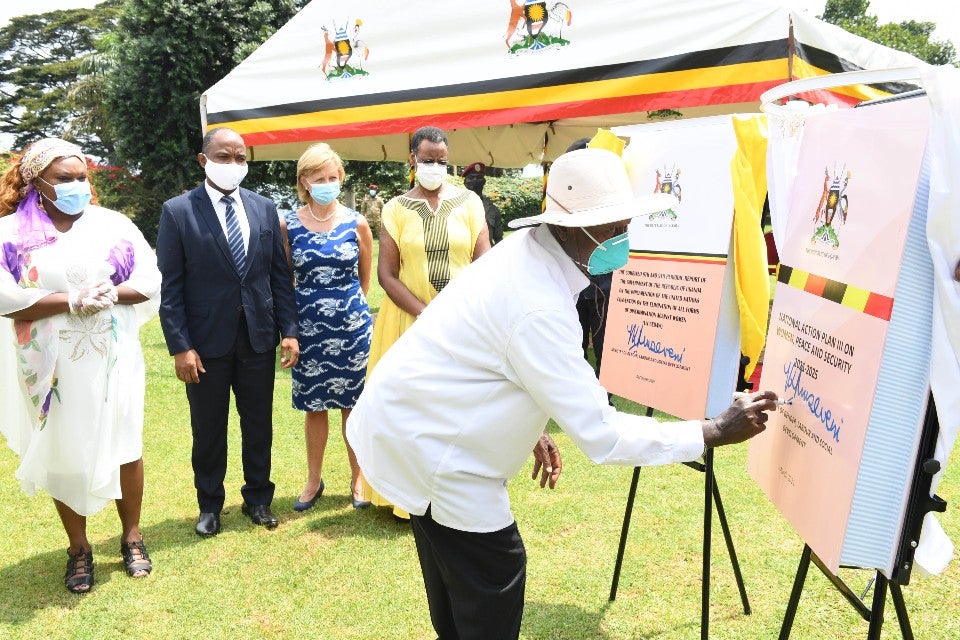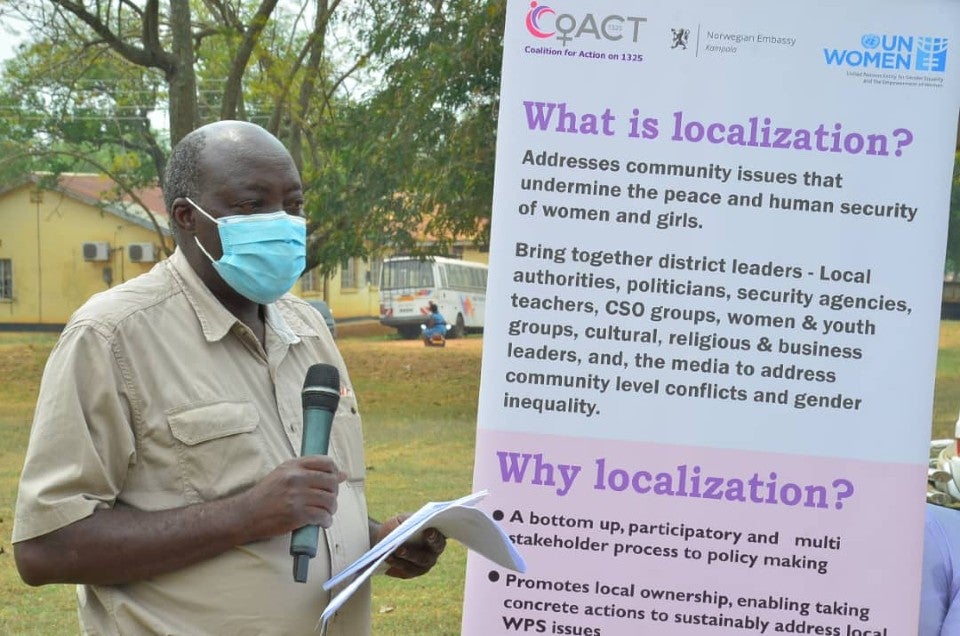Uganda flags off implementation of NAP III on UNSCR 1325
Date:

The Government of Uganda has begun implementing Uganda’s 3rd National Action Plan (NAP) on Women, Peace and Security (WPS). NAP III is a five-year plan focusing on implementing United Nations Security Council Resolution 1325 (UNSCR 1325), which addresses the disproportionate impact of conflict on women and girls and recognizes the critical role women currently and could play in peacebuilding.
Uganda’s 3rd NAP 2021 – 2025 on UNSCR 1325 was developed under the leadership and coordination of the Ministry of Gender, Labour and Social Development and launched by President Museveni in March 2021. The development and implementation of NAPIII is made possible with the generous support of the Royal Norwegian Embassy in Uganda with technical support from UN Women.

The development of NAP III involved a wide range of stakeholders including state and non-state actors. Uganda’s NAP III is one of the first in the world to address Women, Peace and Security issues related to climate change and health outbreaks/pandemics such as Ebola and COVID-19. NAP III also incorporates tools to ensure implementation such as a monitoring and evaluation plan; District Local Government-led Local Action Plans, ministries department agencies and CSO operational plans; communications strategy; and a budget and pooled fund framework.
The National Steering Committee, the highest structure in the coordination mechanism of NAP III, has held meetings to discuss the roadmap for implementation of the plan, particularly identifying viable options for effective mobilization of resources. The steering committee, which comprises 15 experts on peacebuilding, conflict prevention and WPS rights will provide guidance and strategic direction for implementing NAP III and has confirmed a total of USD 25,584,792 needed to implement the 5-year plan.

In the two National Technical Committee (NTC) meetings that have taken place since the adoption of the NAP III, members reported significant progress has already been made in its implementation. Notable progress has been: i) The development and launch of Local Action Plans in six Ugandan districts, half of which have been allocated one percent of district funds for implementation; ii) Ten government and CSO partners have developed operational plans to implement NAP III; iii) The steering committee has strengthened coordination of WPS; iv) There is a CSO and an M&E working group; v) Women conflict mediators held over 20 peace dialogues in key conflict hotspots and three district level peace committees were rolled out; vi) Conflict warning mechanisms are in place with women representing 50 percent of participants; vii) Participation of women refugees is supported for peaceful co-existence; viii) Capacity building of judiciary, police, prisons, the national forces and CSOs on UNSCR 1325 and the establishment of a pooled fund for NAP III to ensure coordinated resourcing across planned outcomes.
The overall goal of NAP III is to promote sustained peace and security through enhanced meaningful participation of women in peace and development processes. The plan has four outcome result areas: i) Prevent all forms of violence; ii) Promote meaningful participation of women in leadership and governance at all levels; iii) Strengthen the capacity of women to mitigate and prevent natural and human-made disasters; and iv) Strengthen the institutional and coordination mechanism for WPS agenda at all levels.
Access Uganda’s 3rd National Action Plan on Women, Peace and Security here.